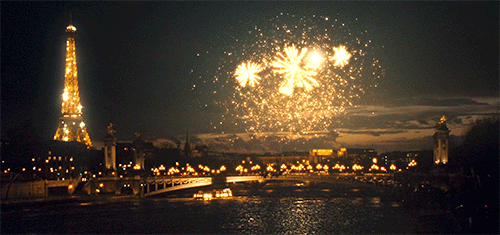
Happy Bastille Day, everyone! It happens ten days after the 4th of July in France, but their party is way more epic than ours. It’s the same basic principal as US Independence Day; shake off the royal oppressors, get drunk, shoot off fireworks, wave red white and blue flags; but let’s face it…the French just know how to turn a reverential patriotic celebration into a hot mess of a street rave in a way we puritanical Americans just can’t. For those of you who want an excuse to uncork some champagne and party like a Frenchman, here’s a quick rundown on the French Revolution so you know what you’re celebrating.
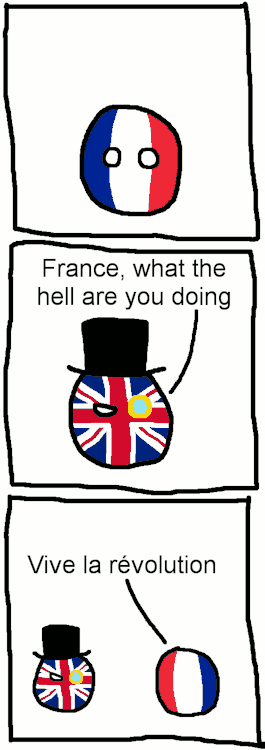
On July 14, 1789, some serious merde went went down in Paris…
On this day, an angry mob stormed the Bastille, symbolizing the beginning of the end of monarchical rule in France, but to get the full story, we have to turn back the clock a bit.
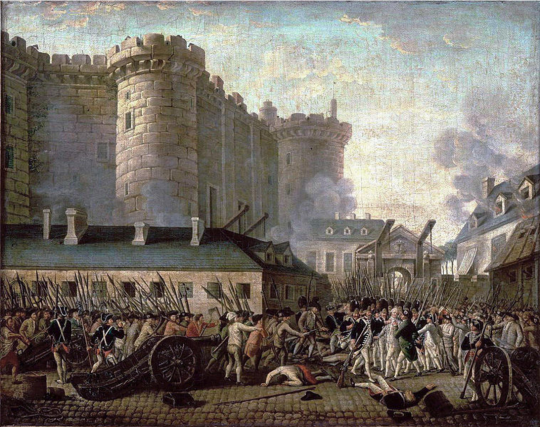
Flashback to America, 1776: It was the best of times, it was the worst of times, and a scrappy band of colonists declared independence from Great Britain. France was like, “Great Britain, we hate those guys!” and sent troops and ships to help the American Revolution. We eventually kicked Britain’s butt, largely due to the contribution of our French allies such as the Marquis de Lafayette.
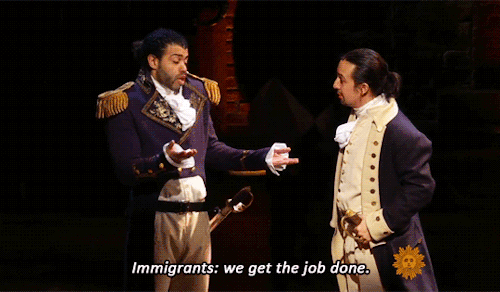
Unfortunately, the French treasury also got its butt kicked funding the costly foreign war, and a lot of people were not fans. Taxes went up, and a series of crop failures led to widespread hunger. The royal family became a target of particular resentment, especially this Queen chick named Marie Antoinette, who allegedly said of the starving masses:
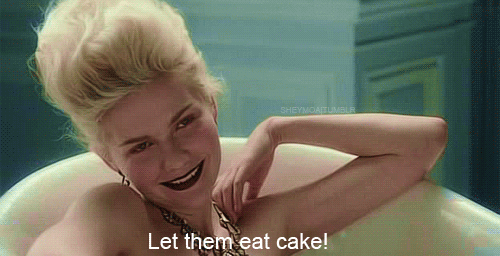
Marie Antoinette was like…
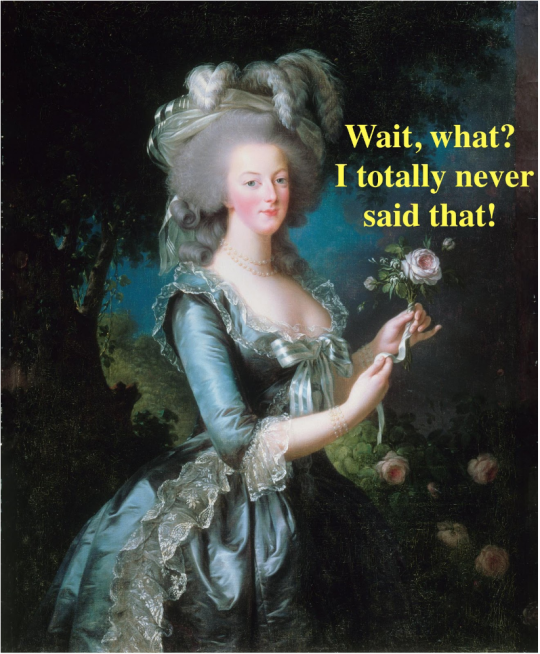
Marie Antoinette with the Rose by Louise Vigee Le Brun, at Versailles.
It’s true, she really didn’t, but ye olde 18th-century publicists were like, “It doesn’t matter, Marie, once it’s on the internet that makes it true…except we don’t have the internet yet, we have pamphlets with girl on girl action, like this!”:
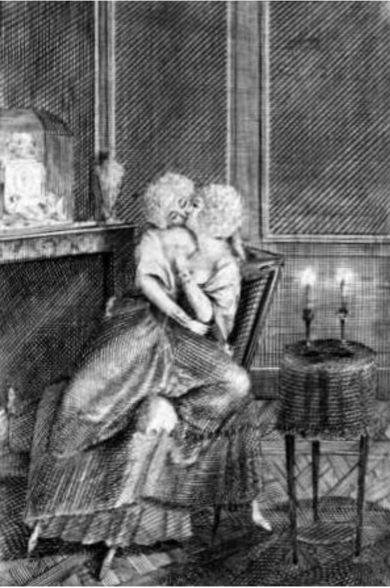
Marie Antoinette gets to second base with her BFF the Duchess de Polignac. She might have done that, but probably not.
Marie’s PR team went into damage control mode and tried to revamp her image by commissioning a new painting by her favorite artist, Louise Vigee Le Brun.
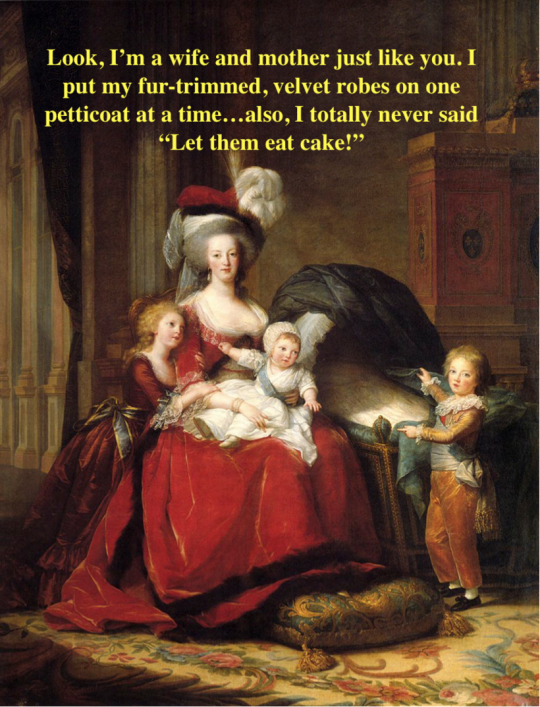
Marie Antoinette and Her Children by Vigee Le Brun, at Versailles.
The modern day equivalent of:
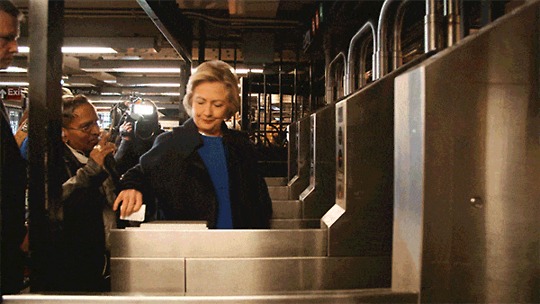

But the people of France were like, “Meh, too little, too late.”
And thus we come to Bastille day, when the mob stormed the ancient fortress, killed the guys in charge and “liberated” the prisoners. Actually, there were only seven people imprisoned there, and they were annoyed by the disturbance. Nevertheless, the Bastille was a symbol of royal tyranny, and its fall to the mob effectively placed authority in the hands of the people for the first time in history.

Well, not quite…
You see, while the people were the backbone of the Revolution, it was really masterminded by the upper middle class and minor nobility, who were jealous of the indulgences of the higher-ranking nobility and clergy. In the terms of Bernie Sanders economics: 90% of the wealth was in the hands of the top 10% of the top 1%, and the bottom 9% of the top 1% wanted in on that. Meanwhile, the bottom 99% just wanted to smash some shit.
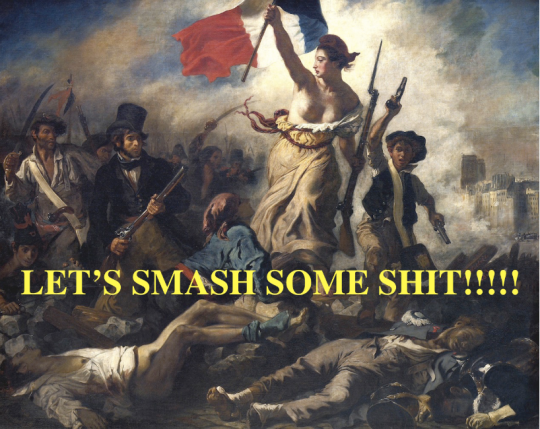
Liberty Leading the People by Eugene Delacroix, at the Louvre-Lens. (Actually, this is the Revolution of 1830, but if you want historical accuracy, read a book! Read a book! Read a muh’f&@kin book!)
However, the fury of revolution was ignited in the people, and a mob of pissed off fishwives marched on the Palace of Versailles and forced the the royal family to return with them to Paris, essentially placing them under house arrest. France tried out a constitutional monarchy for a while, but things went sour when the royals tried to escape in disguises and got caught. It turns out it’s really hard to go incognito when your face is on all the money. Finally, on August 10, 1792, the Revolutionary French National Guard stormed the Tuileries Palace, forcing Louis XVI, Marie Antoinette and their children to take refuge in the Assembly, where they were subsequently stripped of all their privileges and titles.
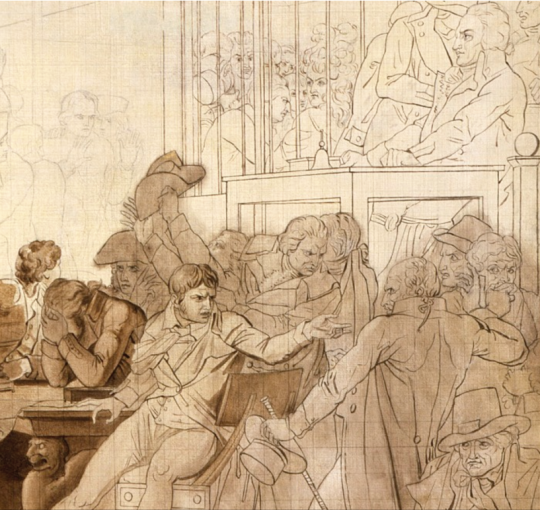
Detail from The 10th of August, 1792 by Francois Gerard, in the LACMA. You can see the royal family, including a very grumpy Marie Antoinette, behind bars top center.
You can probably guess what happened next…
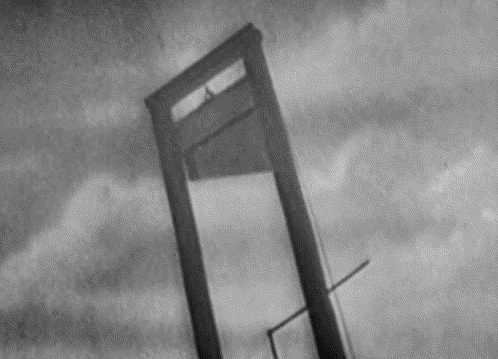
Off with their heads!!!
The Queen and King were dead. Thomas Jefferson and Lafayette worked together to draft The Declaration of the Rights of man and of the Citizen, proclaiming freedom and equality for all men. “Liberté, Egalité, Fraternité” were the law of the land! Well, sort of…
Slavery was technically illegal in France, but not in her Caribbean colonies like Saint Domingue, where African slaves lived under a brutal regime of torture. Slaves and free people of color were like, “So, we’re still waiting on this liberté and egalité thing?” and France was like, “Oh, yeah, we’ll totally get on that right a way,” only they totally didn’t.
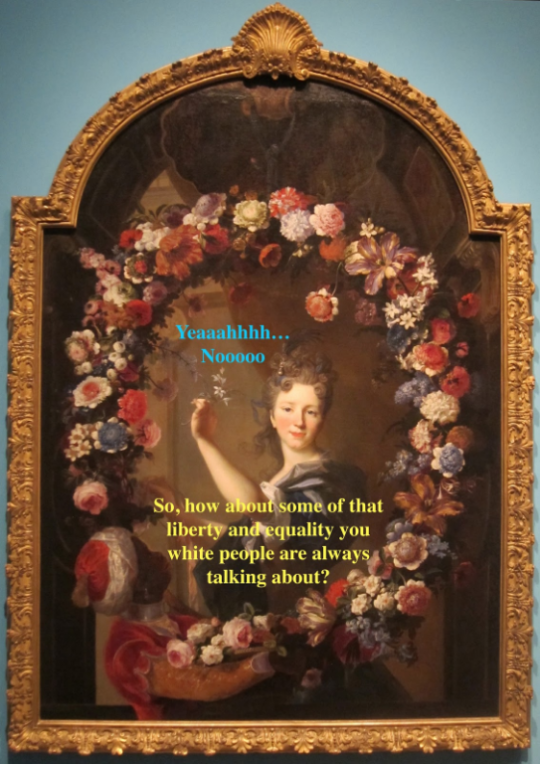
Portrait of Helene Lambert de Thorigny by Nicolas de Largillier (with an unknown slave), at the Honolulu Museum of Art.
So the slaves were like, “Fine, have it your way.”

Massacre of the whites on Saint Domingue.
They burned the plantations to the ground, massacred virtually every white person on the island and founded the free Republic of Haiti.
Back in France, women such as Olympe de Gouges were also like, “We’d kinda like to get in on these so-called equal rights, too.” so she wrote Declaration of the Rights of Woman and the Female Citizen, proclaiming:
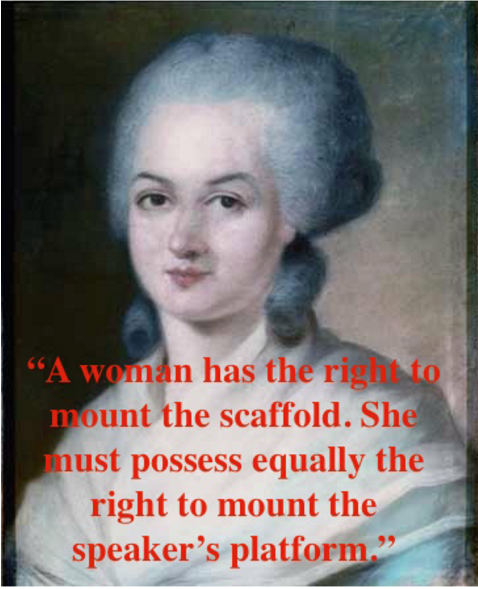
Portrait of Olympe de Gouges by Alexander Kucharsky, in a private collection.
But the all-male Revolutionary Tribunal was like…

And so, you guessed it…
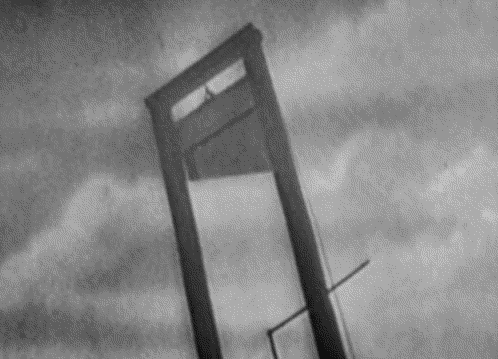
Off with her head!!!
Meanwhile, this guy Maximilian (Darth Vader) Robespierre had seized power in what became known as the “Reign of Terror,” and was guillotining just about everyone for just about everything.

Portrait of Maximilien de Robespierre by a mystery artist, at the Carnavalet Museum.
As usual, poor people got the shaft for rich people’s problems. At least 16,594 people were executed for political “thought” crimes, and up to 40,000 or more who may have been murdered without trial, including children and the elderly. Only a small percentage of these were aristocrats, the vast majority being mostly innocent commoners. The preferred method of execution was the notorious “National Razor,” the guillotine, but some were beaten to death, drowned or even raped to death, including Marie Antoinette’s best friend The Princesse de Lamballe.
This radical violence was spurred on by the incendiary writings of journalist Jean Paul Marat. A young hottie named Charlotte Corday came into his room while he was taking a bath and shanked him in the chest with a steak knife.

The Death of Marat by Jacques-Louis David, in the Royal Museum of Fine Arts Belgium.
Charlotte Corday was a political moderate who despised violence, but she was all like…
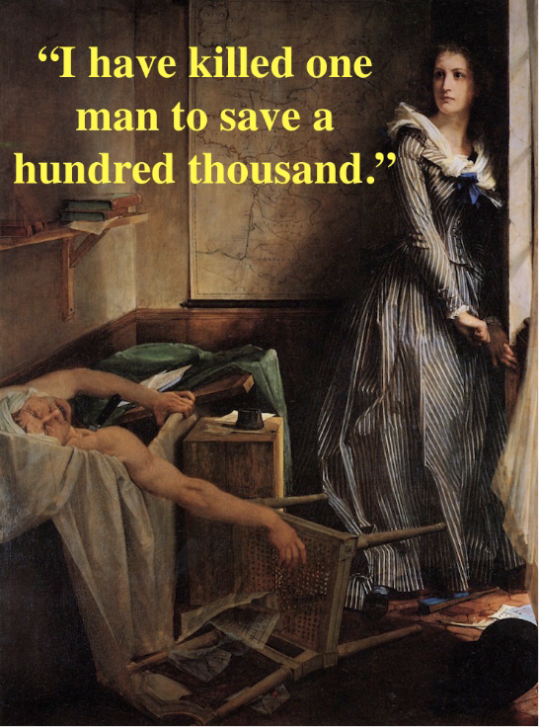
Charlotte Corday by Paul-Jacques-Aime Baudry, in the Fine Arts Museum of Nantes.
She was probably right, but the Revolutionary Tribunal didn’t see it that way, so…
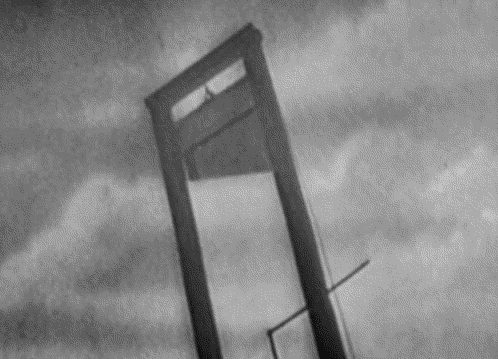
Yup. Off with her head!!!
By now, people were starting to catch on to the fact the Robespierre was the world’s all time greatest douche, so they rose up against him. He tried to shoot himself in disgrace, but accidentally blew off his jaw and survived. Instead of just letting him bleed to death in peace, his enemies kept him alive in agony so they could have the pleasure of executing him by his own precious guillotine.
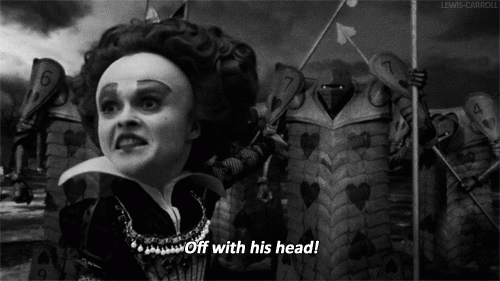
Ironically, he awaited execution in the same chamber as Marie Antoinette. She had been the first victim of Robespierre’s Reign of Terror, and he himself was the last.
After all that beheading, France was starting to look something like this:
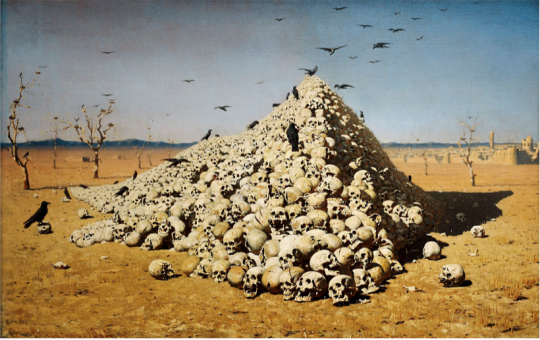
The Apotheosis of War by Vasily Vereshchagin, at the State Tretyakov Gallery.
Also, they were at war with Britain, Austria, counter-revolutionary factions within France, the rebel forces in Haiti, and pretty much the rest of the world. In short, they seriously needed an ally, so France was like, “Why don’t we call up America…those guys totally owe us for that time we had their back in the American Revolution.”
But America was like, “Ehem, this is super awkward…the thing is, it was kind of the King who funded our revolution, and you sort of killed him…also you put the Marquis de Lafayette’s family in prison and he’s our boy…and your Revolution is just kinda decapitation-y and rape-y and generally gives us the heebie jeebies, soooooo, yeah! We’re done here.”
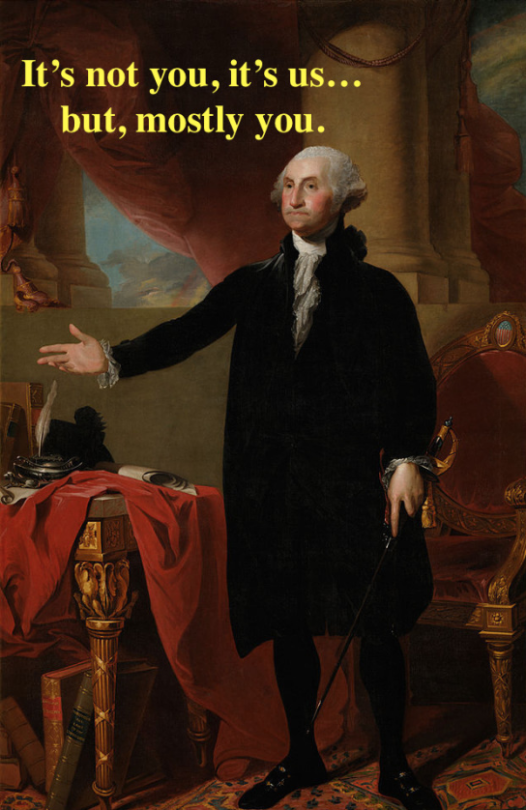
George Washington (Lansdowne Portrait) by Gilbert Stuart, at the Smithsonian National Portrait Gallery.
So France was like…

But just when they were mixing cyanide tablets into the National kool-aid, this aggressive little bro named Napoleon emerged as the hero of the French Revolutionary Wars and was like, “It’s cool, guys, I got this.” Thus France was free at last!
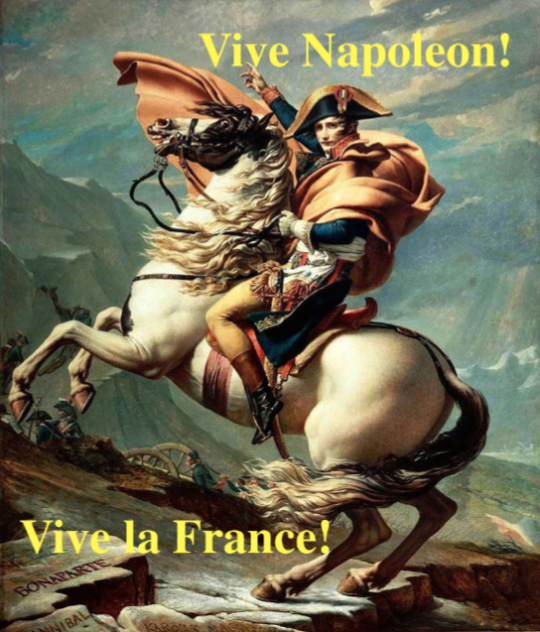
Napoleon Crossing the Alps by David, at Malmaison Chateau.
Except Napoleon declared himself Emperor and dictator and sacrificed an entire generation of Frenchmen in imperialistic warfare, so I guess the moral of the story is…
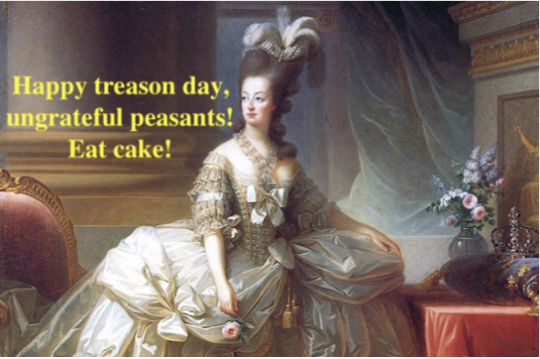
By Griff Stecyk









